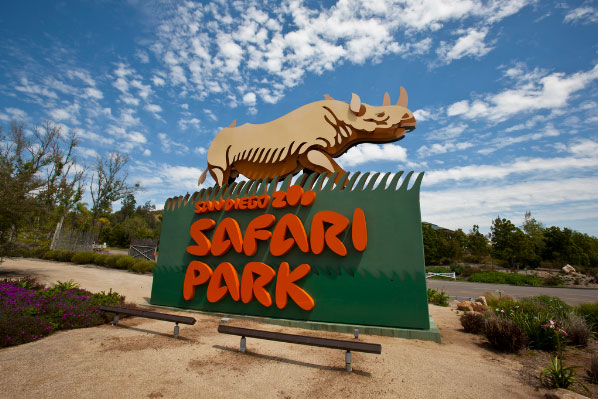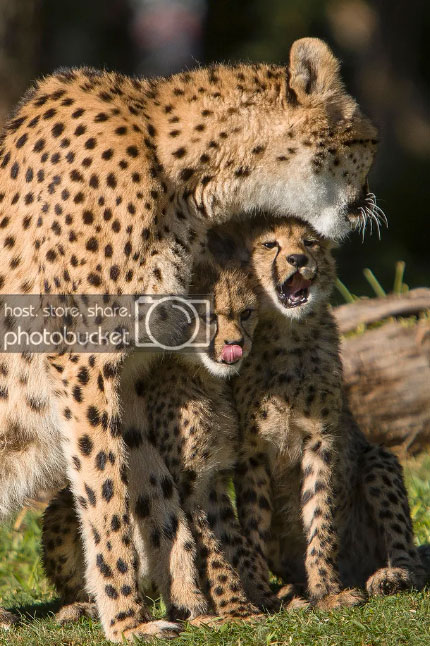Setting the Zoo Bar Higher: A Closer Look at the San Diego Zoo and Safari Park
Posted by Sasha Bailyn on Friday, March 11th, 2016
 With their wide eyes and long curling tails, lemurs danced their way into the American popular consciousness thanks to the animated film Madagascar. Today, guests at the San Diego Zoo Safari Park can get up close and personal with these important endangered prosimians. Guests walk through an immersive experience as lemurs frolic in the trees, bushes and paths around them. The Lemur Walk exhibit is just one example of how the San Diego Zoo team is providing something unique and taking the zoo experience to the next level.
With their wide eyes and long curling tails, lemurs danced their way into the American popular consciousness thanks to the animated film Madagascar. Today, guests at the San Diego Zoo Safari Park can get up close and personal with these important endangered prosimians. Guests walk through an immersive experience as lemurs frolic in the trees, bushes and paths around them. The Lemur Walk exhibit is just one example of how the San Diego Zoo team is providing something unique and taking the zoo experience to the next level.
Let’s be honest: 2016 is a tough time to be a zoo or aquarium. Institutions that house live animals are under increased scrutiny. Are the standards of care what they should be? Do entertainment, education and conservation goals outweigh the challenges of keeping animals in captivity? Could captivity actually be the best solution for specific endangered species? What makes a great zoo setting? What are the most effective ways to engage and entertain guests? These are all questions that swirl in the ether around the topic of zoos. One organization – the San Diego Zoo – has been setting the standard for innovative zoos for 100 years. This year, the Themed Entertainment Association has recognized the San Diego Zoo with a Thea Classic Award.
The zoo opened its doors following the close of the 1915 Panama – California Expo in the city’s Balboa Park. Dr. Harry Wegeforth founded the zoo in 1916, in response to lions that had been abandoned after the expo. As the Thea judges note: “What began in a moment of inspiration has resulted in a century of amazing animals and extraordinary people coming together to pursue a dedicated vision.”
Today, the 100-acre San Diego Zoo is primarily a cageless facility with more than 3,700 resident rare and endangered animals. It’s also home to a renowned botanical collection. More than 3.75 million people visit the zoo annually. Its sister organization, the San Diego Safari Park, currently has two million annual visits, and houses 2,600 animals on an 1800-acre space.

The Thea judges noted how the zoo balances delivering an amazing guest experience with an ambitious conservation agenda: “Consistently, both have been on the forefront of innovations in contemporary zoo keeping and most active in conservation and preservation efforts. San Diego Zoo Global is a non-profit organization dedicated to saving species from extinction. Over the last century conservationists with San Diego Zoo Global have worked to preserve and reintroduce more than 30 endangered species to managed habitats in their natural habitat. Looking towards the next 100 years, the well-known conservation organization is looking to new technologies and community supported efforts to turn the tide of extinction and create a world zoo where all species are protected in their native habitats as they are in accredited zoos.”
From a park design perspective, the San Diego Zoo manages to accomplish several things of note. The park was founded with the ideal of moated or cageless exhibits, and the concept has become increasingly sophisticated to the point where it has redefined modern zookeeping. The layout and design of the San Diego properties goes well beyond the “use bigger enclosures” idea. Instead, the objective was to create cageless, open-air habitats for animals that are as close to their natural environments as possible. In many cases, multiple species live together in themed areas that helps create a more natural proxy of the outside world.

The Tull Family Tiger Trail, which opened just over a year ago, provides an example of how design, interactivity and conservation values come together to build something unique. The $19.5 million dollar exhibit took 14 months to construct. It houses Sumatran tigers and visitors can be just inches away, as the enclosure design features tempered glass and safety features. There are interactive elements that include a rope where guests and tigers can play tug of war. At the same time, aspects of the exhibit work to remind guests about logging – a commercial activity that has critically endangered the tigers’ habitat.
Another example is The Harry and Grace Steele Elephant Odyssey. Envision what California would have looked like 12,000 years ago, with herds of mammoths wandering through. The 7.5-acre habitat is a first-of-its-kind experience, providing an entertaining and educational journey through time that helps guests visualize just that. Elephant Odyssey combines the fun of a zoo with the experience of a museum by creating an untamed landscape of animals from the past and present. It features elephants, jaguars, California condors and others next to replicas of their extinct relatives that roamed California during the Pleistocene era.

The zoo integrates a variety of different options for guests that go beyond just viewing the animals (although that’s clearly the central attraction!). One of the standout features is the level of detailed theming that goes into each exhibit. Native botanicals can be found in each area. The Zoo offers botanical tours that help guests understand the importance of plant life and the role that it plays in the broader ecosystem.
The Safari Park is even more expansive than the Zoo, giving guests the chance to view and interact with animals in a different way. There are a variety of carefully curated experiences that focus on everything from targeted animal encounters with specific species to VIP guided tours of the entire park.

The final element of the San Diego Zoo’s group of organizations is the Institute. The Institute is comprised of scientists and conservation specialists that work on a range of projects. While their work is largely behind the scenes, it makes the high quality experiences and larger social impact of the zoo possible. The Institute team works on projects such as banking genes for endangered animals, animal conservation, preventing diseases and preserving habitat. Some of their success stories include positive developments in their work with Pandas, Condors, and endangered Hawaiian bird species.
The master design of the San Diego Zoo helps bring together the diverse range of exhibits into a cohesive narrative that speaks to the importance of wildlife and environmental stewardship. Guests are educated and made aware of conservation issues; but they’re also engaged, delighted and entertained. The overall layout of the park uses design choices to direct visitors’ line of sight, in a similar style to theme park design. The scenic settings go beyond providing a beautiful backdrop and natural animal habitats. The overarching purposeful design allows guests to forget the outside world and really immerse themselves in what the Zoo has to offer. With all this blended into one organization’s mission, it’s easy to see why the Zoo and Safari Park have been recognized with a Thea Classic. We look forward to keeping you updated on their latest exhibits in the years ahead.
Images provided courtesy of San Diego Zoo, San Diego Zoo Safari Park and The Themed Entertainment Association



 Sign Up For Our Newsletter
Sign Up For Our Newsletter 



